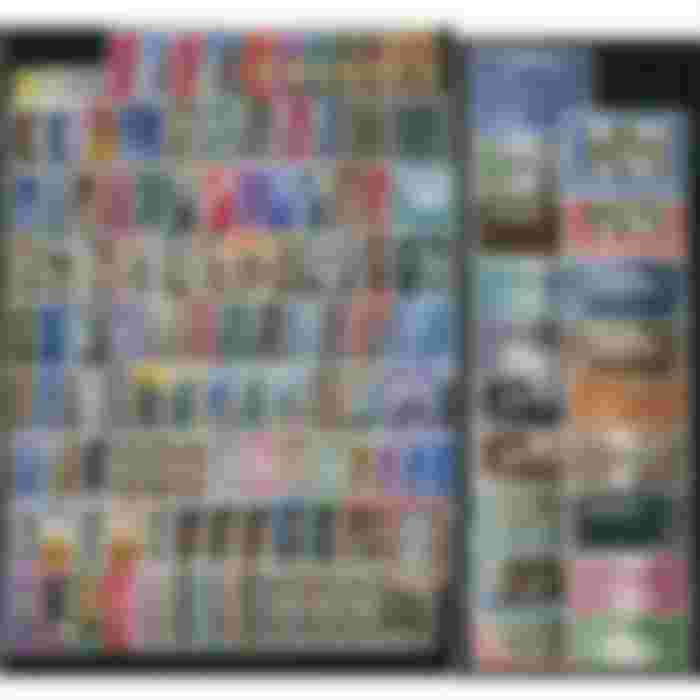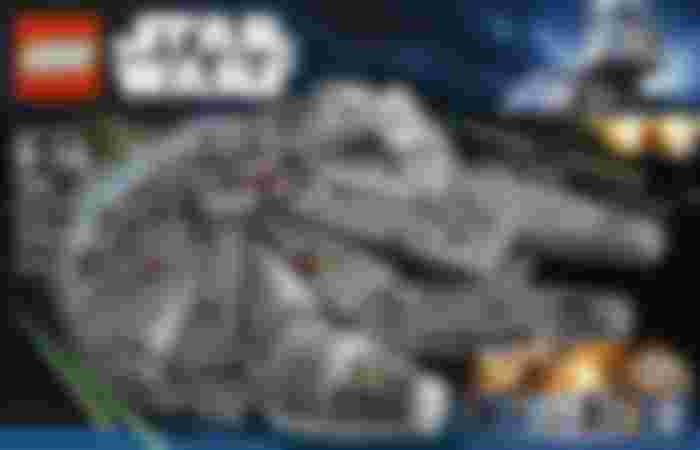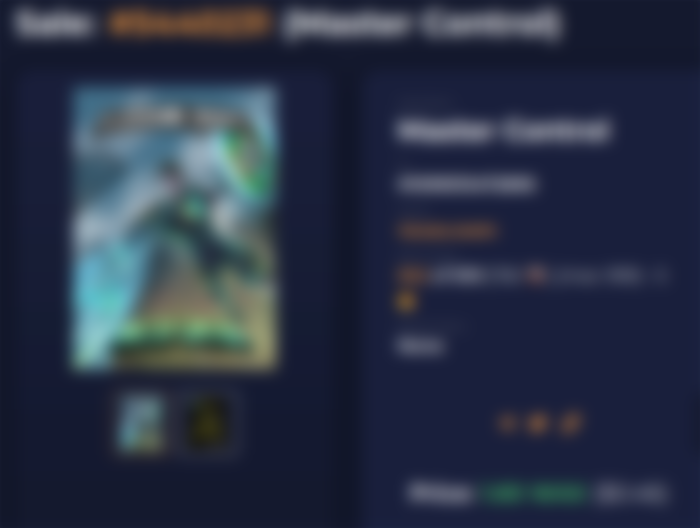A new gold fever hit crypto galaxy in recent times. NFT (Non fungible tokens) have been pointed as another big development which could boost markets. Some values explosions, like Enjin coin (+400% in 30 days), could be strong signals that confirm this prediction. Several players are working and dominating the market (WAX wallet, Opensea and Rarible marketplaces). But what about the "objects" behind this new wave?
The wide range of NFTs is quite impossible to sum up, here a brief list that gives an idea of diversity:
digital art pieces;
digital rare collections;
digital series of images;
gaming cards;
gaming status;
gaming tools;
digital properties.
What I want to explore in this article is that different objects mean different markets and different investment strategies. My NFT first approach as a newbie was a little confused (in this article I explained extensively), but then I remembered that I'm a toy collector (Lego®️ sets) since decades and that in last 10 years I became a reseller in order to pay part of my passion. So I did some researches to classify collecting markets.
Digital art
The artist Mike Winklemann, called Beeple, sold recently his masterpiece (I hope so) for 69 millions $ in a Christie's auction. Beeple has been a pioneer and demonstrated what new tech frontiers could bring to art. You can see below the piece of art that estabilished record.

Art collectors are an exclusive club that passed through, at least, 2 millenniums, and they're supermen of collecting scenario.
Gaius Maecenas was the first famous artists' sponsor in the ancient Rome. Maecenas supported young poets (young Virgil was one of them) and he obtained an important prestige which he used in government affairs. In this case the value of supporting art was something different from money, but he was a precursor of best art investment: he discovered early talents and so he entered the market in very low positions. The second, but more important skill of Maecenas, were fine art spirit and experience that guided him to appreciate and promote the best.
The path was long from Maecenas to Christie's but founding principles are the same. Vincent Van Gogh sold some masterpieces to have a lunch and the same paintings were sold for dozens million dollars. The list of most expensive paintings shows that incredible prices have been reached under some simple rules:
1 - availability: Salvator Mundi of Leonardo da Vinci was not sold for 450 million dollars (not only) because this is the masterpiece of Leonardo (the author of La Gioconda, Louvre, Paris), but because this was one of few Leonardo paintings available on the market.
2 - rarity: why the paintings of Vincent Van Gogh are not at the top of most expensive paintings list? Van Gogh has been a prolific painter: more paintings are produced, less rarity will be in the author's production.
Therefore we have yet some tracks to follow to understand also digital art market:
early productions of "young" artists, in order to be focused and discovered, require to get inside a net of information, art enthusiasts, sometimes limited and exclusive circles where specialization and a lot of time to study and follow novelties are required;
if the artist becomes notorious she/he could start a huge production of pieces, which does not meet the rarity rule, and so the expected value could be lower;
when the artist will be famous it's fundamental to be inside social network relations to sell our collection (anyone can access Opensea or Rarible, but not everyone can access to Christie's services).
Finally, the digital art collector has a great passion, knowledge, social relations, time and money to spend in order to reach success.
A lot of money, because the best investments in a fashion like market is like net fishing: you have to diversify portfolio, you have to bet on an artist and promote her/his art in your social circle, and many times you'll get no attention from the world outside. Obviously, if you want to enter a later market you'll need a bunch of money.
Briefly, digital art market is not for eveyone. Even if we limit our research to the market economy there are specific professional courses, like those offered by Christie's.
Digital collections
In this case Cryptopunk story is an easy sample that could explain more than thousands cases. 10,000 characters launched by Larva Labs representing punk folk that reached an incredible success. Based on the ETH-721 standard for NFTs, they're unique pieces of digital art and were precursors of an entire movement.

The numbers of success:
Number of Sales (Last 12 Months)
7,774
Average Sale Price (Last 12 Months)
15.42Ξ ($26,177)
Total Value of All Sales (Lifetime)
119.88KΞ ($203.5M)
Here there's a list of Cryptopunk features that granted to these punk guys a longlasting glory:
originality: software solutions behind Cryptopunks have been revolutionary, and the handmade images, then converted in digital art, did the rest;
availability: the entry level to buy Cryptopunks was not impossible or reserved to a specific elite;
rarity: consequently to value increase the number of Cryptopunks available in the market decreased (here we have to consider rarity as above, because there are particular Cryptopunks and more common ones, so rarity is both in market available pieces and in artistic productions);
What does Cryptopunk compare to inside collecting markets? It compares to most valued collections, such as stamps (philately), fiat coins and branded products.

If we look to some stats we argue the strict join between collecting and investment. Philately market reached high peaks in 70s when stamps had many enthusiasts and many people who invested in new emissions in order to have a good chance in a wide market:
5 billions $ of estimated market cap;
30 million collectors estimated worldwide in 2004;
10% yearly compound in last 50 years;
low value transactions dominant above rare stamps transactions.
We get some important informations that can be applied to digital collections and digital series. Stay here one moment: which is the difference between a collection and a series?
A collection could be strictly an emission of different objects, for example all different objects in one single piece, or different objects with different rarity. Cryptopunks is an example of a very strict collection, all pieces are different. Stamps appears (more or less) always a less strict collection, where some objects are rare and some other very common. Pay attention to your NFT investment!
The great part of pieces that you can buy on Wax, Opensea and Rarible are digital series. They are often very good efforts by artists, but if you have an airdrop of 100 identical NFTs, the value will be surely lower than another collection by the same artist of 100 pieces all different. You can easily understand this thinking to the job than an artist has to sustain: in order to create 100 different pieces the artist has to work dozen dozen times more than to create only one. Now I invite you to go on Wax, Opensea and Rarible and you'll tell me your opinion about the last concepts.
Let's try to apply two real world samples to explain better. We will consider Lego®️ sets and, on the other side, cars' models.

Lego sets have been traded in recent years in a multi million secondary market, in which sellers are above all AFOLs (adult fans of Lego), which means seasoned collectors, and buyers are AFOLs, and many times the two roles are covered by the same collector.
Lego sets have an annually prize recharge of 4%, in most cases. It means that the same traditional set (for example, CITY police headquarters) has an increase of 4% year above year, despite of being a widely sold toy. You can find common sets in all stores, physical and online, on eBay or bricklink as secondary market, but in any case the rise of prices is granted by the company policy.
So we start with a 4% of potential interest, year over year. Then we add rare sets, low available sets and an immense population of collectors.
Finally, we have an exclusive brand that produce an impressive number of sets. Fake products are few, produced with a lower quality and they are in general a very bad investment, because they decrease their value immediately.
Which strategy to become a Lego®️ sets reseller:
buy common sets at a discount rate of 40-45% or more. In 1 -years the gain will be not less than 50-55%, so more or less 21% per year;
buy rare sets (limited editions, expensive sets produced in a low number) at common price and get some exclusive gifts (discount rate is not less than 15%. Then resell it in 1-3 years at double value or more. Usually you'll obtain a gain of 50% per year, as average;
combination of two strategies exposed above.
This strategy works because we are speaking about Lego branded set. It's not always in this way. Let's see a second sample of traditional series regards car models.

Another traditional collecting market that could be huge, because of the wide population of collectors everywhere, is that one of car models but........there are so many manufacturers that is quite impossible to:
predict the market in some way;
reach some good gain by a net investing (to buy many pieces and then to have something that gives you the gain);
even get informed: there are many forums but sometimes very specialized, and the secondary market is quite always impossible to understand.
Obviously there are important flames which grant important earnings: the age of Ford Mustang, the age of Wolkswagen Beetle, the age of Fiat 500. These are all unpredictable markets that sudden explodes and the only way to earn is:
to be a huge collector, that buys thousands models per year to build her/his collection;
to start a fast reselling circle during the peak, only for experts traders.
If the product is not exclusive to one or few brands, the collecting market is so hard and so exclusive that it's quite impossible to plan an investment strategy.

This is the case of many NFT series. Inside the same branch of interest (for example, blockchain related evocative cards) you'll have following bugs to estabilish a correct strategy:
there're a lot of artists producing (not few brands);
usually they're not rare and they're widely available (no rarity);
We estabilished many rules to move correctly inside NFT collections and series. Now we will take a look inside a particular market where all these kind of products are widespread: gaming cards; gaming status; gaming tools; digital properties, related or not related to games.
Gaming NFT
Most of digital games have no divide to introduce, integrate and make profitable NFTs, because of the design that in last two decades involved the great part of games.
More or less all games have instruments to play better that can be acquired by credits, usually earned playing, and the chance to add money in order to have something more and defeat your friend at next match.
If you now substitute the words "instruments" with "NFTs" and "credits" with "tokens" you are at the end of your strategy set up. If you are a gamer there's no secret, no new effort and you can start investing, how you always did.
I'm a bad player, I've always been, so I chose UPLAND property game to enter in blockchain based games and I'm very satisfied.

In UPLAND you can easily decide if you're a super player, and so you can follow all announcements, discussions and Discord threads in order to catch all new tricks, or you can simply buy some properties (which are registered on an EOS based blockchain) and get a 10% APY. I'm in the second choice now. It costs me no effort but if I was a professional player it could be even easier to make correct moves and earn tokens and so, money.
Let's make another sample: have you ever heard this, about crypto DAPPS?
We want to build a new economy and demonstrate it works
May be thousand times.
Well girls and guys, here we are. Gaming sector has already demonstrated in different ways:
how to create sustainable economies;
how to fund this economies through gaming cards, gaming status, gaming tools, digital properties;
how to boost internal market of goods and services;
how to monetize your skill and/or your investments.
Which points of strength transformed the world of games in perfect representation of what the NFT could be? Here a simple list:
a huge number of very interested collectors;
the link between rarity and use cases, so that gaming tool is not only rare, but it can boost your performances, for instance (usefulness was one motivation for Maecenas to support young poets) ;
easy and fast marketplaces to buy and sell your pieces (you've not to jump wallet by wallet).
Investment strategies: requirements
The following arguments derive from what we discussed above as recurrent features of a good collector:
time: can you spend all day for your NFT investment or some minutes per day?
money: are you a professional investor or a newbie who want to use your little earnings to try new NFT market?
knowledge: are you inside a net of art enthusiasts, with exclusive contacts and insider information, or have you installed the WAX ten minutes before and you want to buy something?
The answers have been expressed in centuries of professional of amateur collecting, has we've seen above, and are frequently obvious: the objects themselves, and so the market or the market niches, vary deeply according to your level of expertise, time availability and financial firepower.
The following scheme aims to simplify your choice according to this three criteria.

The attribution of requirements weights has been extremely simplified, and it requires further explanations. But as you'll see at the end many evidences that emerged from previous analysis explain many choices as quite obvious.
In digital art, this is the simplified name I chose, taste for art and expertise in coding are two fundamental characteristics. I think that it's impossible to get inside this market without on of this 2 skills. To techies, remember that code alone cannot make a great piece of art, and remember that contemporary art worked for decades along the limit with technology. It requires to spend time because you've to be "accepted" in very exclusive networks, if possible, and you have to promote by yourself the artists and the masterpieces on which you invested. Finally, a lot of money because the fishing net strategy is your strategy: buy many (sometimes expensive) pieces and then wait to sell it. Your portfolio has to be huge.
In digital series you have to spend a lot of time in order to promote your favourite collection. You to have to be a lobby of yourself: inside a market where rarity, availability and originality are not always strength points, social promotion can give you the 2x, 5x or 10x gains you need to earn from your investment, Your portfolio has to be greater, because many pieces will stay in your pocket. Buy what you like, always, in the worst case you'll have something you've desired in your pocket. A good knowledge about thousands of daily projects by enthusiast artists stepping in NFT scene is what you need.
And least but non last, girls and guys, newbies and fellows, there are gaming NFTs: gaming cards, gaming status, gaming tools, in all branches of gaming world, inside internal economies that demonstrated their strength in last decades. Why do you need few money? Because in most cases games leave you the choice to earn playing what you can buy, so basically you can obtain more with less money. This market requires appreciable quantity of your time, but may be you're spending this time just now for free. Why do you need enough knowledge about gaming NFT, and you don't need to get a Nobel prize about it? Because this is the typical self training where all internal dynamics create an easy way to upgrade your skills.
Total property: pay attention!
What I introduce you, and I recommend you to do your research as I did, was spread by The Defiant newsletter. I also recommend you to subscribe, because I did and I find this service simply great.
Most NFTs give you the complete property of smart contract and the code that backs smart contract, and obviously the position in blockchain; but most of them do not give you the complete property of the content, or simplifying to the attachment of the smart contract (the piece of digital art, the image for example). Beeple images, themselves, reside on a HTTP URL hosted on Nifty’s servers that contains Crossroad’s metadata.
My collector soul screams loudly: what? For traditional collectors (and resellers) the complete control of the item is basic, without there's no collecting.
Therefore I suggest you to follow seriously the projects that try to decentralize also file sharing and storing, like IPFS Interplanetary File System.
Conclusions
NFT investments are more complicate than cryptocurrencies investments. Many other variables affect the result, and it's very useful to get inspired by traditional collecting markets. Three requirements are necessary to evaluate what is better for you: how much time you have to spend, how much money do you want to invest and the level of knowledge you have (or you can reach).
Gaming related NFTs and digital properties are the best investments for newbies. People who love visual art are nowadays ready to engage in digital art market, if they appreciate what backs NFT (the code) they're perfect for this task. The evolution of NFT offer will introduce new "objects" to buy, collect and trade: music, VIP gadgets, branded collectibles.
In this article we cited the market caps of some traditional markets. Usually billions are yearly traded in greatest markets, and I think billions could be a sustainable size for overall NFT markets.
Cryptocurrencies market cap, if we sum up all cryptos volumes, is sized in trillions. If someone is telling you that NFT are the next big thing which could boost the entire crypto market, in my opinion they're prophesying a bubble. This is an opinion of an aged collector involved in a traditional, stable and multi millionaire collectibles market.
That's why I love the Waifu project, based on Simple Ledger Protocol and Bitcoin Cash blockchain, which entered recently its marketplace phase with the website juungle.net.

If you're interested in this project I suggest @Constant1995 blog. What I like more of Waifu project are ambitious goals, realistic size and simple tools perfect for newbies.
On the contrary NFT oversized markets are not for dreamers, they're for pirates.
Follow me on https://noise.cash/u/EnergyB0x.









As i said on Noise some of them are of questionable quality - see the pixelated characters here as an example - which is why I don't get them, but an excellent write up